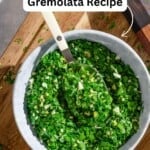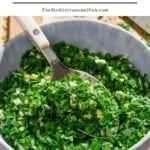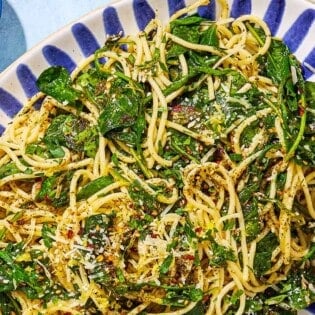Gremolata, a zesty condiment from northern Italy, is made with just three staple ingredients and brightens any dish. Sprinkle it on everything from grilled fish or vegetables to rich stews, braises, and hearty soups!
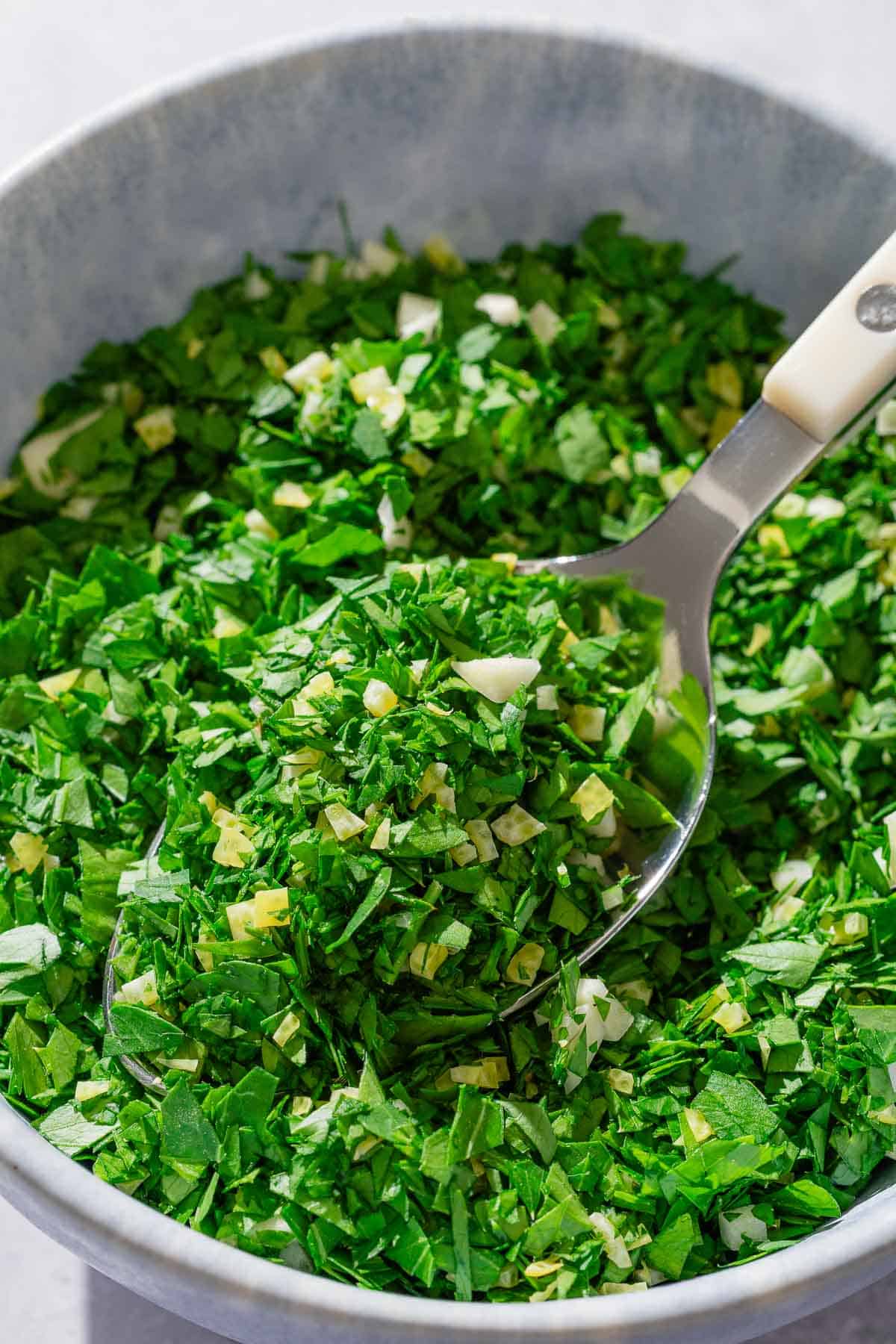
Gremolata, or gremolada in the local Milanese dialect, is a bright mixture of finely chopped parsley, garlic, and lemon zest. It’s so easy to make, and can be used as a finishing touch on almost any recipe.
Ossobuco, a veal dish from Northern Italy, is gremolata’s traditional partner; the condiment’s usefulness in the kitchen does not end there, nor should it. This gremolata recipe can revive and improve countless other dishes, including grilled fish, hearty vegetable soup, and lots of others!
Best of all, you probably have everything you need to make it in your pantry and fridge. Grab your mezzaluna or a sharp knife and let’s get going!
Table of Contents
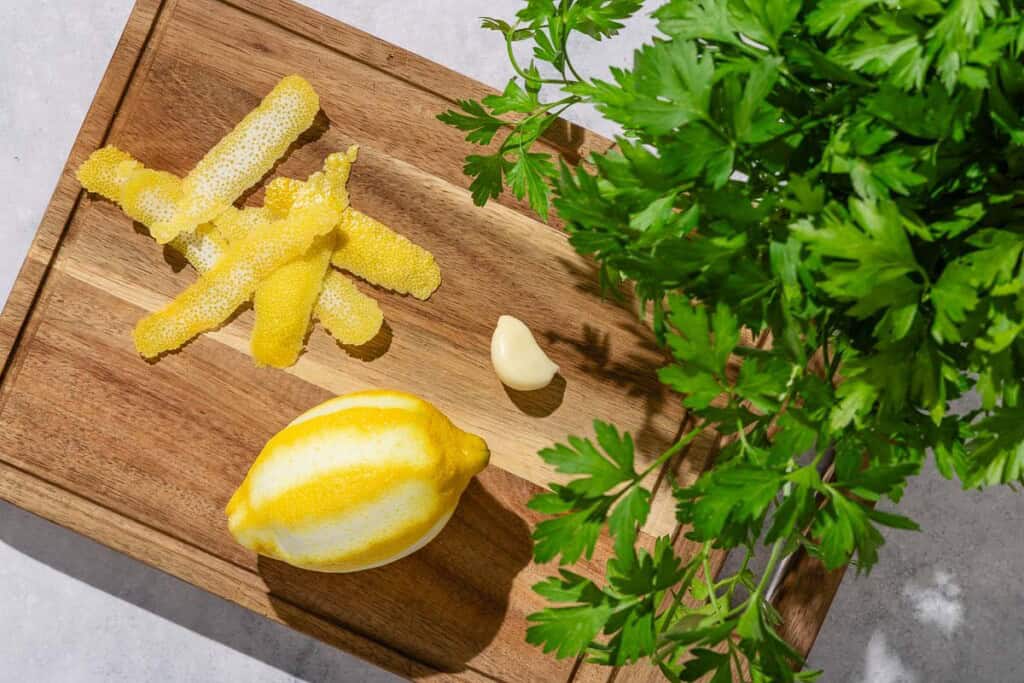
What is Gremolata?
Three simple ingredients—that’s it—are all it takes to make this zesty and versatile condiment. Here’s what you need.
- Flat-leaf parsley. Choose fresh, deep-green colored flat-leaf parsley, and remove any wilted leaves.
- Garlic. A fresh garlic clove provides a crucial, pungent hit of peppery flavor to the gremolata. Look for a “young” head of garlic, which is to say garlic that is not dried out or sprouting.
- Lemon zest. You’ll need only the yellow part of the fruit’s rind for this recipe, none of the white pith. A vegetable peeler does a good job of peeling the zest into strips. You can also use a zester, if you like.
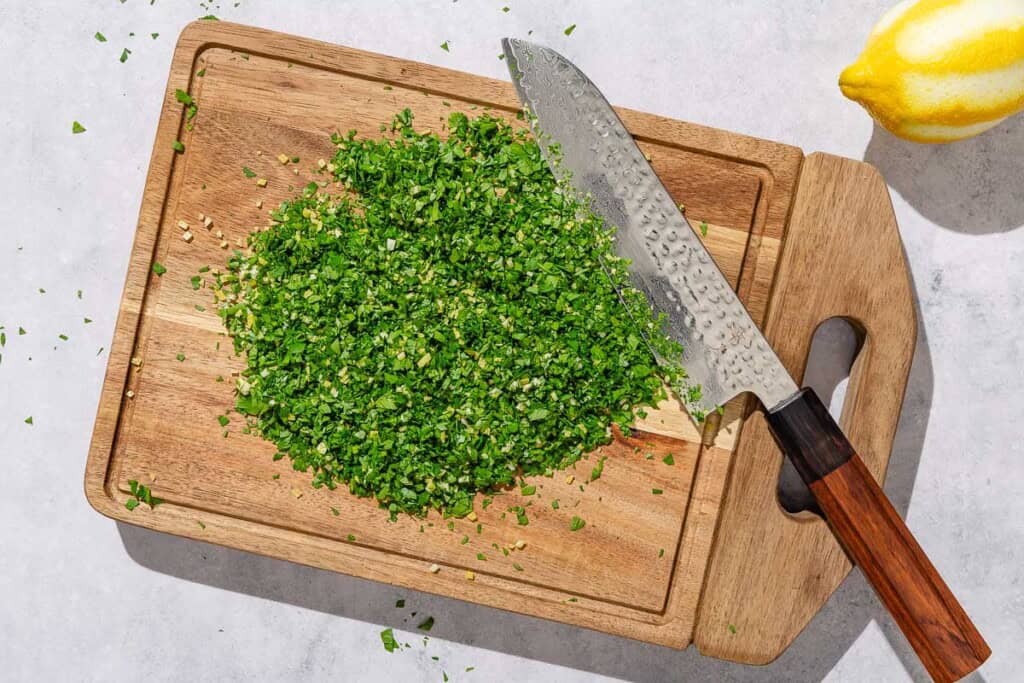
How to Make Gremolata
Making gremolata is easy—so easy, it feels like cheating to even call it a recipe. All you need is a sharp knife or a mezzaluna—a rounded half-moon blade with handles—to produce a fluffy mound of this condiment.
- Clean the parsley. Rinse and the entire bunch of parsley under cold running water and pat it dry. Pluck the leaves from the stems. You’ll need one packed cup of parsley leaves—about an ounce (30 grams). You can discard the stems, but you’d be throwing away lots of flavor. Instead, store them in a plastic bag in the freezer and and add them to the pot next time you make homemade chicken stock or vegetable broth.
- Peel the garlic clove. Once peeled, cut it in half. If there is a green sprout in the center, pry it out with the tip of a paring knife and discard it. Cut the garlic halves into pieces.
- Zest the lemon. Use a vegetable peeler to remove the zest of one lemon in strips. Reserve the lemon for another use (I use the juice to make vinaigrette).
- Chop. Mound all of the prepped ingredients together on a cutting board. Use the mezzaluna or a sharp knife to chop the ingredients until you have a very fine, fluffy mixture and everything is uniform in size. Use the gremolata within a couple of hours, or place it in a lidded container and refrigerate for up to a day. For longer keeping, and to prevent the parsley from wilting, stir in 2 tablespoons of extra-virgin olive oil and store, covered, in the refrigerator, for up to 3 days.
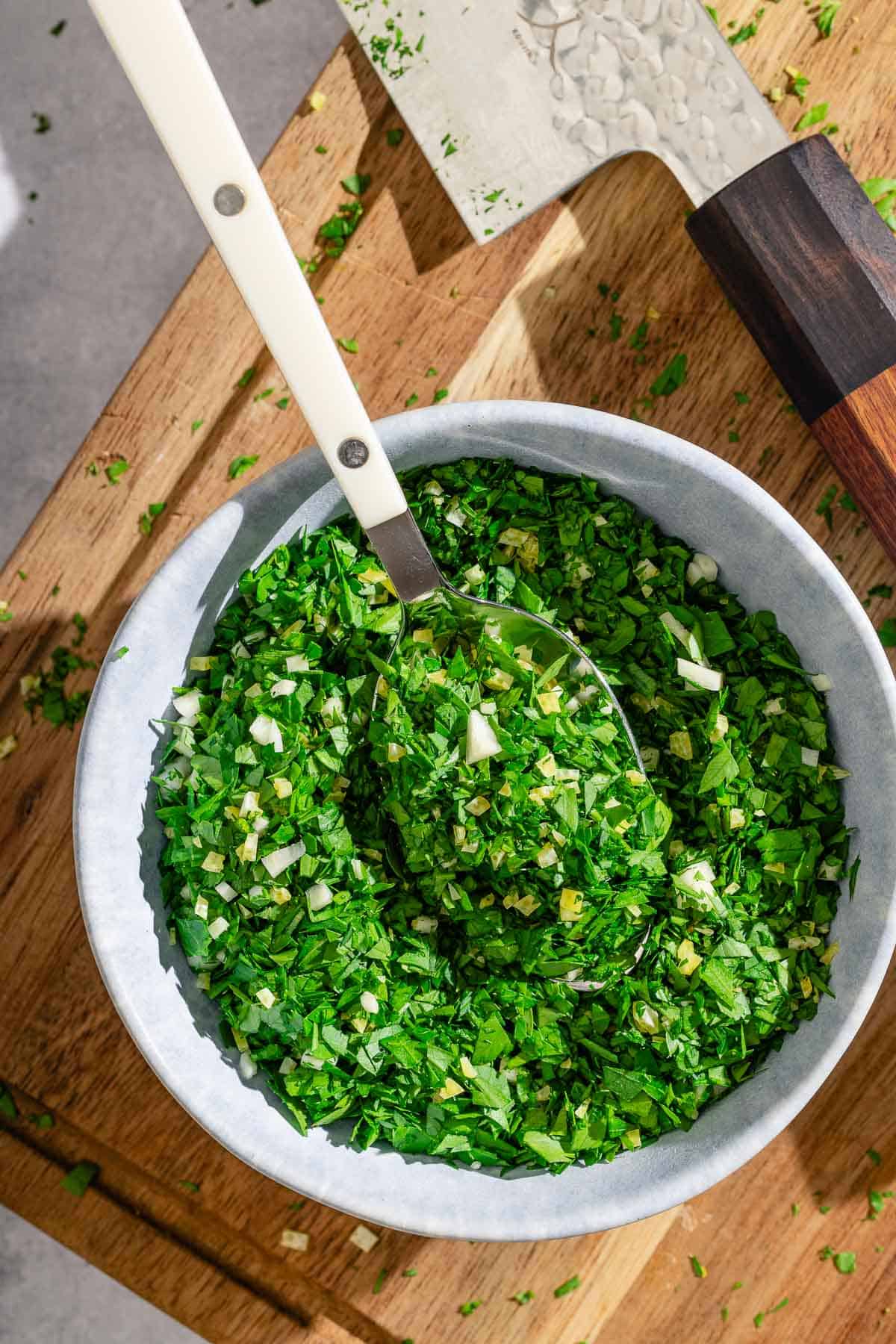
Make it Your Own
You can create nearly endless variations using this base gremolata recipe. Just remember to stick to the general Italian rule that when it comes to flavors, fresh is best and less is more. In other words, don’t combine too many ingredients, or you risk ending up with a muddy mix rather than bright, clean flavors that give you the “kick” you’re looking for to elevate your food. Here are some of my favorite gremolata variations:
- Fennel-Orange Gremolata: Substitute 1/4 of the parsley leaves with fresh, feathery fennel fronds and use orange instead of lemon zest.
- Herb-Citrus Gremolata: Substitute 1 to 2 tablespoons of the parsley leaves with fresh oregano or thyme, and use a mix of lemon and orange zest.
- Orange Olive Gremolata: Combines parsley, orange zest, and olives. We use it in this Cioppino recipe to take it over the top.
- Anchovy Gremolata: Some traditional gremolata recipes call for chopping a salted or oil-marinated anchovy fillet into the mixture. The small bit of preserved fish adds a nice, salty, briny touch.
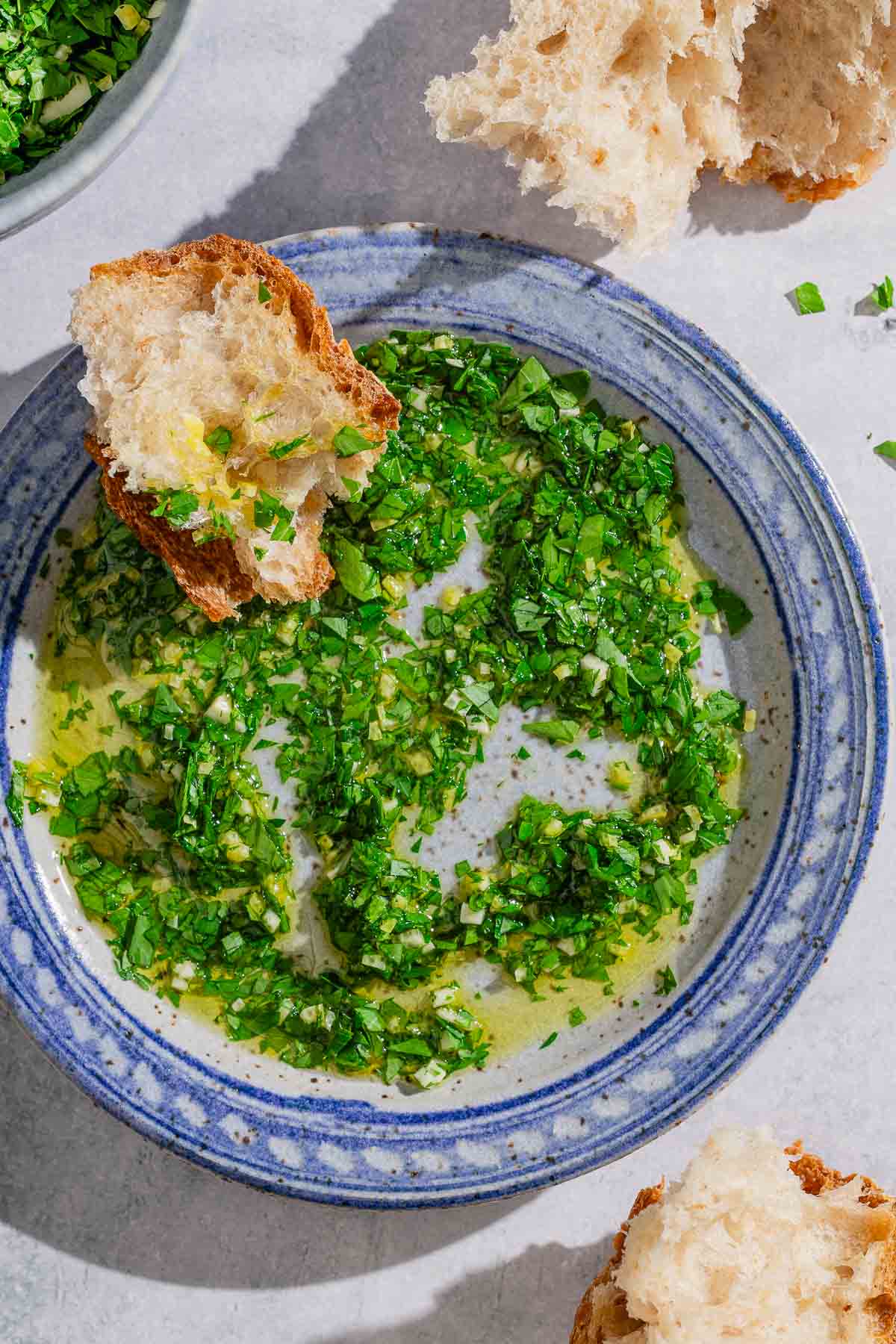
How to Use Gremolata
In addition to its intended use to brighten up rich stews or braises, here are some other ways to enjoy this gremolata recipe. Here are a few of my favorites:
- Garnish soup or stew. Stir a few spoonfuls into hearty vegetable soup recipe—like this Lentil Potato Soup—right before serving.
- Season ground meat. Add 2 to 4 tablespoons to your favorite meatball mixture.
- Add it to grilled seafood. Sprinkle it on roasted whole fish or grilled salmon fillets while the fish is still hot to release the gremolata’s aroma.
- Brighten up fried foods. Use it to garnish breaded chicken cutlets or crispy calamari.
- Sprinkle it onto grilled or roasted vegetables. I especially like gremolata on grilled eggplant or grilled zucchini seasoned simply with salt, pepper, and olive oil.
- Stir it into salad dressing. Brighten up your favorite salad dressing with a spoonful of gremolata.
- Turn it into pesto. Add a couple of tablespoons of finely chopped pistachios and Parmesan cheese and stir in enough olive oil to make a sauce the consistency of basil pesto.
Herby Condiments to Dress Up Dinner
- Zhoug: A spicy Middle Eastern cilantro sauce made with green chilies and warming spices.
- 5-minute Chermoula: A Moroccan sauce made with herbs, lemon, ginger, and red pepper flakes
- Fresh Basil Pesto: An Italian combination of basil, olive oil, pine nuts, garlic, and Parmesan.
More Ideas to Use Up Parsley By the Bunch
Sides and Small Plates
Grilled Artichokes with Garlic, Parsley, and Lemon
Fish and Seafood
Baked Oysters with Lemon, Parsley, and Crispy Breadcrumbs
Browse all Mediterranean recipes.
Visit Our Shop.
Gremolata
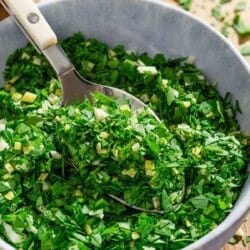
Ingredients
- 1 packed cup fresh parsley leaves (1 ounce, 30g)
- 1 garlic clove, halved (green sprout removed, if necessary) and coarsely chopped
- Zest of 1 lemon
- Extra virgin olive oil (optional)
Instructions
- Make the gremolata. Place the parsley leaves, garlic, and lemon zest on a clean cutting board. Use a sharp chef’s knife or a mezzaluna to reduce the mixture to a fine mince. Keep chopping until all the ingredients are very finely chopped, fluffy, and uniform in size. Transfer the gremolata to a bowl.
- Store leftovers. If you have any leftover gremolata, put it in a tightly lidded container and refrigerate it for up to a day. For longer keeping, stir in 1 to 2 tablespoons of extra-virgin olive oil, and store in the fridge in a lidded container for up to 4 days.
Notes
- Visit our shop to browse quality Mediterranean ingredients including olive oils, honey, jams, and spices.
Nutrition
Bundle and Save!
Get the flavor party essentials to start your Mediterranean Diet Journey today!

